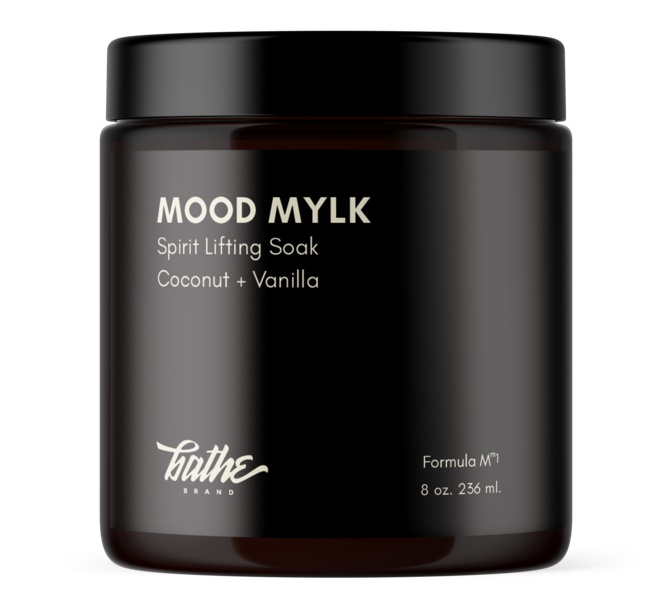
Mood Mylk Soak
Ingredients overview
Highlights
Skim through
| Ingredient name | what-it-does | irr., com. | ID-Rating |
|---|---|---|---|
| *Dehydrated Vegan Coconut Milk | |||
| Sodium Bicarbonate | abrasive/scrub, buffering | ||
| Zea Mays (Cornstarch) | viscosity controlling, abrasive/scrub | ||
| *Aloe Barbadensis (Aloe) Leaf Juice | soothing, moisturizer/humectant | goodie | |
| *Arctium Lappa (Burdock Root And Seed) Extract | antioxidant, soothing | goodie | |
| Vanilla Planifolia (Vanilla) Absolute Oil | emollient | ||
| Citric Acid | buffering |
Bathe Brand Mood Mylk SoakIngredients explained
This ingredient name is not according to the INCI-standard. :( What, why?!

A corn-derived, white to yellowish, floury powder that works as a handy helper ingredient to create nice feeling emulsions.
It gives a generally pleasant skin feel, has some mattifying effect (though rice starch is better at that), it reduces greasiness and tackiness and helps the formula to spread easily without whitening or shininess.
Aloe Vera is one of today’s magic plants. It does have some very nice properties indeed, though famous dermatologist Leslie Baumann warns us in her book that most of the evidence is anecdotal and the plant might be a bit overhyped.
What research does confirm about Aloe is that it’s a great moisturizer and has several anti-inflammatory (among others contains salicylates, polysaccharides, magnesium lactate and C-glucosyl chromone) as well as some antibacterial components. It also helps wound healing and skin regeneration in general. All in all definitely a goodie.
Burdock root is a goodie plant extract that has anti-inflammatory and antioxidant properties. Also, it has some anti-fungal and seborrhea regulation magic powers that make the ingredient especially useful for greasy and flaky skin and scalp.

Citric acid comes from citrus fruits and is an AHA. If these magic three letters don’t tell you anything, click here and read our detailed description on glycolic acid, the most famous AHA.
So citric acid is an exfoliant, that can - just like other AHAs - gently lift off the dead skin cells of your skin and make it more smooth and fresh.
You may also want to take a look at...
| what‑it‑does | abrasive/scrub | buffering |
| what‑it‑does | viscosity controlling | abrasive/scrub |
| what‑it‑does | soothing | moisturizer/humectant |
| what‑it‑does | antioxidant | soothing |
| what‑it‑does | emollient |
| what‑it‑does | buffering |





